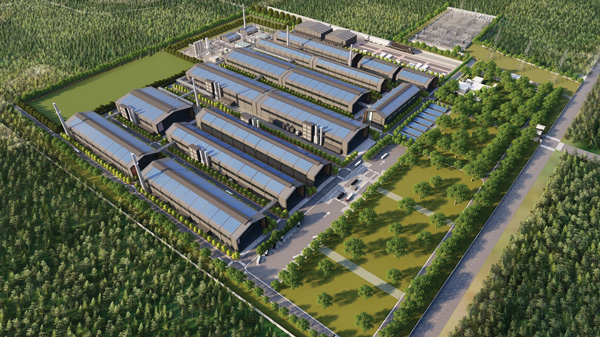Back in the day, there was a great future in plastics, as Mr. McGuire (Walter Brooke) told Benjamin Braddock (Dustin Hoffman) in “The Graduate.” Today, that line would likely substitute plastics with advanced materials. Composites, engineered polymers, hybrid materials and nanomaterials were unheard of in 1967 when the movie was released. Today, they’re at the center of product innovation in virtually every manufacturing sector, from aerospace to electric vehicles to renewable energy to medical devices.
For the aerospace industry, advanced materials such as titanium alloys and carbon-fiber composites provide lighter-weight, more durable materials for use in engine components, wings, fuselages and other aircraft parts. They’ve been in use in aircraft and space-vehicle manufacturing for years.
Automotive manufacturers used advanced materials to make vehicles lighter and more fuel efficient. As applied to the electric vehicle sector, they’re particularly critical to helping manufacturers achieve energy and sustainability goals.
Where Facilities Are Being Located
Where is capital being invested today in advanced materials facilities for aerospace, EV production, semiconductors and other end users?
In July, Massachusetts-based EFC Gases & Advanced Materials announced plans for a new facility in McGregor, Texas, near Waco, that will be a supplier to the semiconductor industry in central Texas.
“The new facility will play a crucial role in onshoring essential materials for semiconductor fabs, aligning seamlessly with Texas’ thriving semiconductor industry,” said Pavel A. Perlov, president and CEO of EFC, announcing the $210 million, 120-job project. The McGregor Industrial Park, where EFC Gases & Advanced Materials will build its facility, is midway between the Dallas-Fort Worth and Austin metros, in the heart of Texas’ semiconductor industry. A rendering of the $650 million graphite anode manufacturing facility Epsilon Advanced Materials is building in Brunswick County, North Carolina.
A rendering of the $650 million graphite anode manufacturing facility Epsilon Advanced Materials is building in Brunswick County, North Carolina.
Image courtesy of Epsilon Advanced Materials
Epsilon Advanced Materials (EAM), an Indian maker of battery materials, is building a $650 million graphite anode manufacturing facility in Brunswick County, North Carolina. The 1.5-million-sq.-ft. facility will create about 500 jobs. It’s set to begin operations in 2026 and be at full capacity by 2031, at which time it will be producing 50,000 tons of graphite anode annually.
The Brunswick County location puts EAM in close proximity to the Port of Wilmington, vehicle manufacturing facilities in the Southeast and numerous automotive suppliers.
“Having an environmentally friendly world-class facility in North Carolina resolves supply chain concerns that the automotive industry has experienced in recent years,” said EAM CEO Sunit Kapur in a statement. “We are proud that with our tech capability to manufacture both natural and synthetic graphite, we will be able to provide graphite anodes to the growing EV battery industry faster, more reliably and at a competitive cost without import challenges.”
Carbon Fiber Innovations
A recent aerospace industry advanced materials project has come from space transportation company Firefly Aerospace, which is doubling its manufacturing space in Briggs, Texas, north of Austin, to 207,000 sq. ft. The company works with Northrop Grumman on production of the Antares 330 and the Medium Launch Vehicle (MLV). The new space will accommodate two rocket production and assembly buildings, two new test stands and equipment for advanced materials. The company also has expanded its headquarters and operations centers in Cedar Park, Texas, located closer to Austin next to Round Rock.
“Firefly’s new automated fiber placement machinery, which is already widely used and proven in the aircraft industry, is a significantly more efficient and cost-effective approach to rocket production and can be utilized for composite parts across our vehicle lines,” said Dan Fermon, COO of Firefly Aerospace, in a company release. “These high-speed robotic machines can lay up more than 200 pounds of carbon fiber per hour, allowing us to produce all the large carbon composite structures for Alpha in just seven days and MLV in just 30 days. This is about nine times faster and seven times cheaper than our former process using high-touch laser placement systems.”
Speaking of carbon fiber, in January, Toray Composite Materials America, Inc., commissioned an upgraded carbon fiber production line in its Decatur, Alabama, facility. The company says the $15 million upgrade “doubles the production capacity of the TORAYCA™ T1100 carbon fiber and adds critical redundancy to support the rising demand for defense applications.”
Toray is a supplier to several United States Department of Defense (DoD) weapons systems and the Future Vertical Lift (FVL) program. It has additional facilities in Tacoma, Washington, and Spartanburg, South Carolina.

